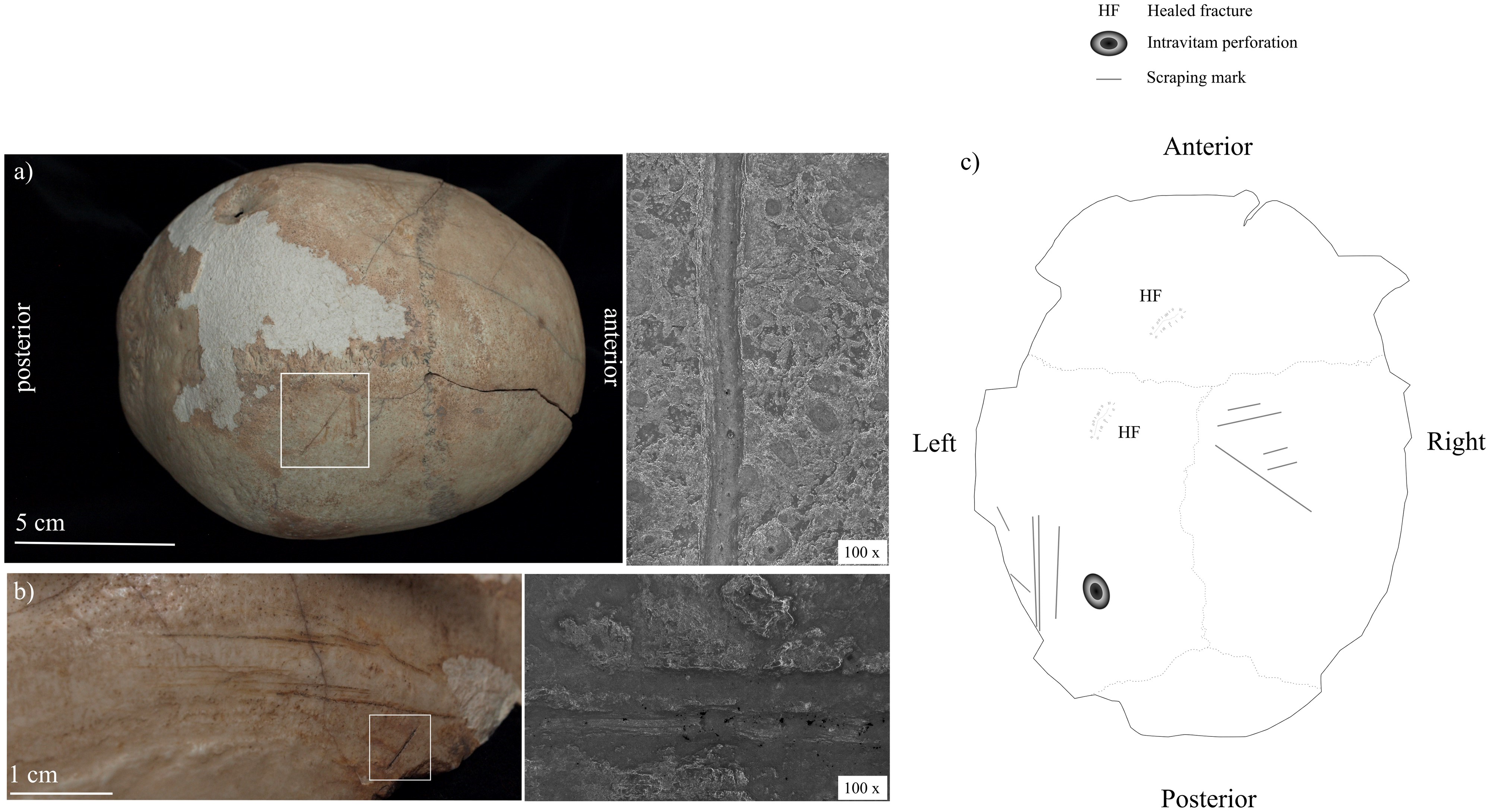Caves have long been used for funerary purposes in cultures from the Americas to Asia. In the Iberian Peninsula in modern-day Portugal and Spain, placing the dead in natural caves dates back to the early Neolithic era. Also widespread was the manipulation of human remains within these burial caves, utilizing the bones to make tools, and according to a new study, turning skulls into drinking cups.
Archaeologists examined skeletal remains found in the Cueva de los Marmoles in southern Spain from at least 12 ancient humans. They had been placed in the cave between the fifth and second century BCE, according to radiocarbon dating.
The team found complex funerary practices, with evidence that bones had been modified and even used as tools as well as other, from a modern perspective, macabre purposes.
“Anthropic traces on the remains (e.g. fresh fractures, marrow canal modifications, and scraping marks) hint at their intentional fragmentation, cleaning from residual soft tissues, and in some cases reutilization,” the team wrote.
“These practices are well-exemplified by the recovery of one ‘skull cup’ and of two long bones used as tools. These data align with those from other cave contexts from the same geographic region, suggesting the presence, especially during the Neolithic period, of shared ideologies centered on the human body.”

The markings led the team to believe the skull was used as a cup.
The skull cup was marked with shallow scrapes, where ancient humans had attempted to clean away the soft tissues, according to the researchers who added, “[T]his evidence strongly hints at the attempt to access the marrow after crushing the long bone structure.”
Though they considered an explanation of cannibalism, the cuts were more consistent with trying to remove soft tissue than butchery, and the placement of bones suggested humans had returned to the caves after the bodies had been placed in there, to modify the bones and perhaps consume the marrow, which is nutritious.
So why did these ancient humans bury their dead in chambers, and return to interact with the remains? While from a modern perspective, it may make sense to remove the dead and keep them away from us as they decompose, the authors warn against attributing these motivations to the burials.
“The internal spatial structure of burial chambers (megalithic or hypogeic) and natural caves is reminiscent of the ‘socially active’ houses of the living, conferring to the community of the dead the social role of ‘ancestors’,” the team explains.
“Such cultural elements may vary, but the proximity of and interaction with the physical remains of the deceased seems a rather focal aspect of a system aimed at maintaining and reproducing the social order.”
The study is published in PLOS ONE.
Source Link: Early Humans Crafted Skeletal Remains Into A Drinking Cup And Other Tools